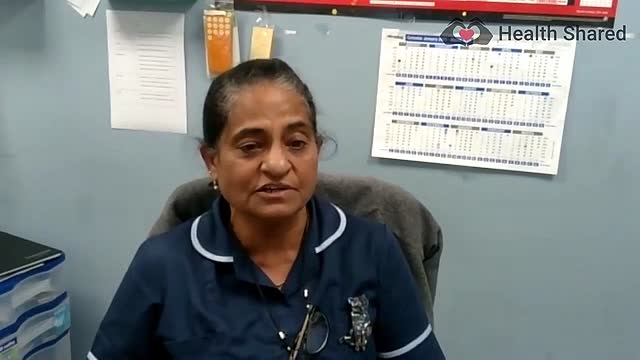Shoulder pain
You can usually do things to ease shoulder pain yourself. See a GP if it doesn't start feeling better after 2 weeks.
How to ease shoulder pain yourself
You usually need to do these things for 2 weeks before shoulder pain starts to ease. It can take 4 to 6 weeks to recover fully from mild shoulder pain.
Do
- stay active and gently move your shoulder
- try exercises for shoulder pain – do them for 6 to 8 weeks to stop pain returning
- stand up straight with your shoulders gently back
- sit with a cushion behind your lower back
- rest your arm on a cushion in your lap
- use pain relief so you can keep moving – try painkillers like paracetamol and ibuprofen, and heat or cold packs
Don't
- completely stop using your shoulder – this can stop it getting better
- do things that seem to make it worse
- make up your own strenuous exercises or use heavy gym equipment
- slouch when sitting – don't roll your shoulders or bring your neck forward
Try either a:
- pack of frozen peas in a tea towel for 5 minutes, 3 times a day
- hot water bottle in a tea towel for 20 minutes, 2 to 3 times a day
A pharmacist can help with shoulder pain
A pharmacist can suggest:
- the best painkiller – this might be tablets, or a cream or gel you rub on the skin
- other ideas for pain relief and things you can buy to help, like heat and cold packs
- seeing a GP if you need to
Find a pharmacy
See a GP if:
- the pain doesn't improve after 2 weeks
- it's very difficult to move your arm or shoulder
- the pain started after an injury or accident, like a fall
Go to a minor injuries unit or A&E if:
- the pain is sudden or very bad
- you can't move your arm
- your arm or shoulder has changed shape or is badly swollen
- you have pins and needles that don't go away
- there's no feeling in your arm or shoulder
- your arm or shoulder is hot or cold to touch
These can be signs of something serious, like a broken or dislocated bone, or a torn (ruptured) ligament or tendon.
Find a minor injuries unit
Treatment from a GP
A GP will examine you to work out what's causing your shoulder pain. They might send you for tests (such as an X-ray) to check the cause.
They'll suggest a treatment based on the cause, for example:
- stronger medication or injections to ease pain and swelling
- physiotherapy or exercises to do at home
- things to avoid to stop the pain getting worse or returning
- seeing a specialist for tests or treatment
Physiotherapy for shoulder pain
The number of physiotherapy sessions a GP might prescribe depends on the cause of your shoulder pain.
If you're still in pain after your sessions end, go back to the GP. They might prescribe more physiotherapy or suggest another treatment.
Physiotherapy from the NHS might not be available everywhere. Waiting times can also be long.
You can also pay to get physiotherapy privately.
Find a registered physiotherapist
Causes of shoulder pain
Shoulder pain that doesn't improve after 2 weeks might be caused by something that needs treatment. Don't self-diagnose – see a GP if you're worried.
| Shoulder symptoms | Possible causes |
|---|---|
| Pain and stiffness that doesn't go away over months or years | frozen shoulder, arthritis (osteoarthritis or rheumatoid arthritis) |
| Pain that's often worse while using your arm or shoulder | tendonitis, bursitis, impingement |
| Tingling, numb, weak, feels like it's clicking or locking | shoulder instability, sometimes because of hypermobility |
| Sudden very bad pain, can't move your arm (or it's difficult), sometimes changes shape | dislocated shoulder, broken bone (such as the upper arm or collarbone), torn or ruptured tendon |
| Pain on top of the shoulder (where the collarbone and shoulder joint meet) | problems in the acromioclavicular joint, like dislocation or stretched or torn ligaments |





Comments